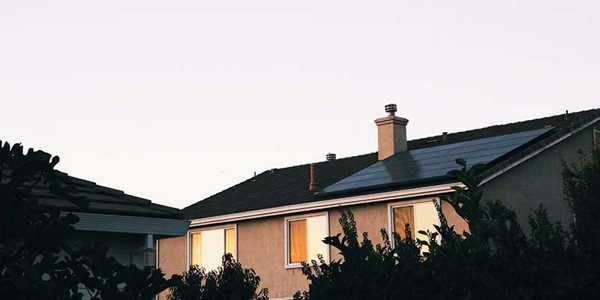
Maintaining hardwood floors is not just a matter of aesthetics; it’s a crucial step to preserve the investment in your home. Many homeowners, however, inadvertently damage their beautiful floors by making common cleaning mistakes, such as using too much water or unsuitable cleaning products. Read on and you'll learn about the ideal cleaning frequency, the best tools and products to use, and detailed steps to achieve pristine results. With our tips, you'll restore the natural shine and ensure your hardwood floors remain in excellent condition for years to come.
How Often To Clean Your Hardwood Floors
Cleaning your hardwood floors regularly is essential for maintaining their beauty and durability. The frequency of cleaning varies depending on your household environment, especially if you have pets or children. For homes with a lot of foot traffic, it’s advisable to sweep or vacuum daily to remove dirt, dust, and hair. This proactive measure prevents debris from scratching the surface.
For more thorough cleaning, aim to mop your floors weekly with a hardwood-specific cleaner to eliminate grime and bacteria accumulation. Additionally, performing a deep clean once a month can help tackle stubborn stains and revitalize the floor’s luster. A consistent cleaning routine is key; neglecting this duty can result in dirt and damage buildup over time. By establishing a reliable schedule, you can keep your hardwood floors looking beautiful and ensure they last for many years.

Best Tools For Cleaning Wood Floors
Proper tools are vital for maintaining the aesthetic appeal and longevity of hardwood floors. A microfiber mop should be at the top of your list; its unique fibers trap dust and dirt without scratching the wood’s surface, making it a highly effective cleaning option. Coupled with a soft-bristle broom, which sweeps away debris gently, these tools offer an excellent daily maintenance solution.
A vacuum cleaner with a hardwood setting is also invaluable as it efficiently removes dirt through suction power while avoiding scratches that can mar your floor’s finish. For a more enhanced cleaning experience, consider adding a steam mop to your cleaning arsenal. Applying steam disinfects and cleans without the use of harsh chemicals, keeping your hardwood safe for children and pets. Together, these tools simplify the maintenance of your hardwood floors, ensuring they maintain their aesthetic appeal all year round.
Hardwood Floor Cleaning Products To Avoid
Choosing the right products is critical when cleaning hardwood floors; certain products can cause irreversible damage and should be strictly avoided. Products with ammonia, for example, can strip the wood’s natural finish, leading to dullness and increased susceptibility to water damage. Wax-based cleaners can result in a buildup that attracts dirt and makes cleaning more complicated.
Harsh chemicals can degrade the structure of your flooring, impacting its integrity over time. Instead, opt for safe alternatives specifically designed for wood surfaces. Look for pH-balanced cleaners and consider a simple mixture of vinegar and water for regular cleaning. For tougher stains, mineral spirits can provide a gentle option that won’t harm your floors. By selecting suitable cleaning products, you can preserve the beauty and enhance the lifespan of your hardwood floors.
Step-By-Step Instructions For Cleaning Hardwood Floors
Cleaning hardwood floors effectively is crucial for enhancing their durability and beauty. Follow these 6 thorough steps to ensure your floors receive a professional-level cleaning:
Remove Dust And Debris
Start by eliminating dust, dirt, and debris from the surface. Use a broom or vacuum cleaner with an appropriate attachment designed for hardwood surfaces. Starting with a clean area is essential to prevent dirt from turning into mud, which can damage the finish and hinder effective cleaning.
Choose The Right Cleaner
It’s vital to select a cleaner appropriate for your hardwood floor’s finish, whether polyurethane, oil-based, or wax. pH-balanced cleaners formulated specifically for wood should be your go-to, ensuring they do not contain harsh chemicals. For oil and wax finishes, a damp cloth with natural oils can be sufficient, while a designated cleaner is best suited for water-based finishes.
Mop With A Microfiber Cloth
Dampen your microfiber mop with the chosen cleaner, but be careful not to overly saturate it. A mop that’s too wet can lead to water seeping between the floorboards, causing damage. Lightly moisten the mop to lift dirt without leaving excess water behind. Mop from one corner of the room outward, ensuring no wet spots remain.
Spot Clean Stains
For specific stains, such as those from spills or pet accidents, address them as soon as possible. Blot the area with a clean, white cloth to absorb the surface liquid. For persistent stains, use an appropriate cleaner or a diluted vinegar solution, gently rubbing with a soft cloth. Avoid scrubbing roughly, as it may damage the finish.
Allow To Dry
After mopping, it’s crucial to permit the floor to dry completely. Excess moisture can weaken the wood and result in warping or cracking. Drying times will vary depending on humidity and ventilation, typically taking anywhere from 30 minutes to a few hours.
Final Inspection And Touch-Up
Once the floor is dry, check for missed spots, particularly around corners and furniture edges. If you spot any scuff marks or areas needing additional attention, touch them up with a soft cloth and a bit of cleaner. This careful oversight will keep your hardwood floors looking pristine and attractive over time.

Tips To Remove Scuff Marks
Scuff marks on hardwood floors can be easily removed with the right techniques. A simple but effective method is to use a pencil eraser; rubbing gently on the mark often does the trick. Alternatively, make a paste using baking soda and water, apply it to the scuff, and wipe clean with a soft cloth. For more stubborn marks, consider specialized cleaning solutions crafted for hardwood surfaces. To further prevent scuff marks, use felt pads under furniture legs, maintain dry floor surfaces, and avoid walking on hardwood with hard-soled shoes. These preventative measures will help maintain your floors’ beauty.
How To Maintain Hardwood Floors
To keep your hardwood floors looking their best, implementing daily care practices is essential.
Start by placing area rugs at entryways to trap dirt and moisture, which helps avoid scratches. Make it a habit to sweep or vacuum regularly; grit can act like sandpaper, leading to unsightly scratches over time. Be mindful of what items you place on your hardwood. Rubber mats can leave marks, while high-heeled shoes can severely damage the surface. Instead, use furniture with felt pads to minimize scratch risks.
Additionally, don’t forget the importance of refinishing and resealing your hardwood floors every couple of years. This not only rejuvenates their appearance but also adds a protective barrier against wear and tear, ensuring your floors remain stunning throughout the years. Incorporate these practices into your routine for enduring hardwood elegance.







